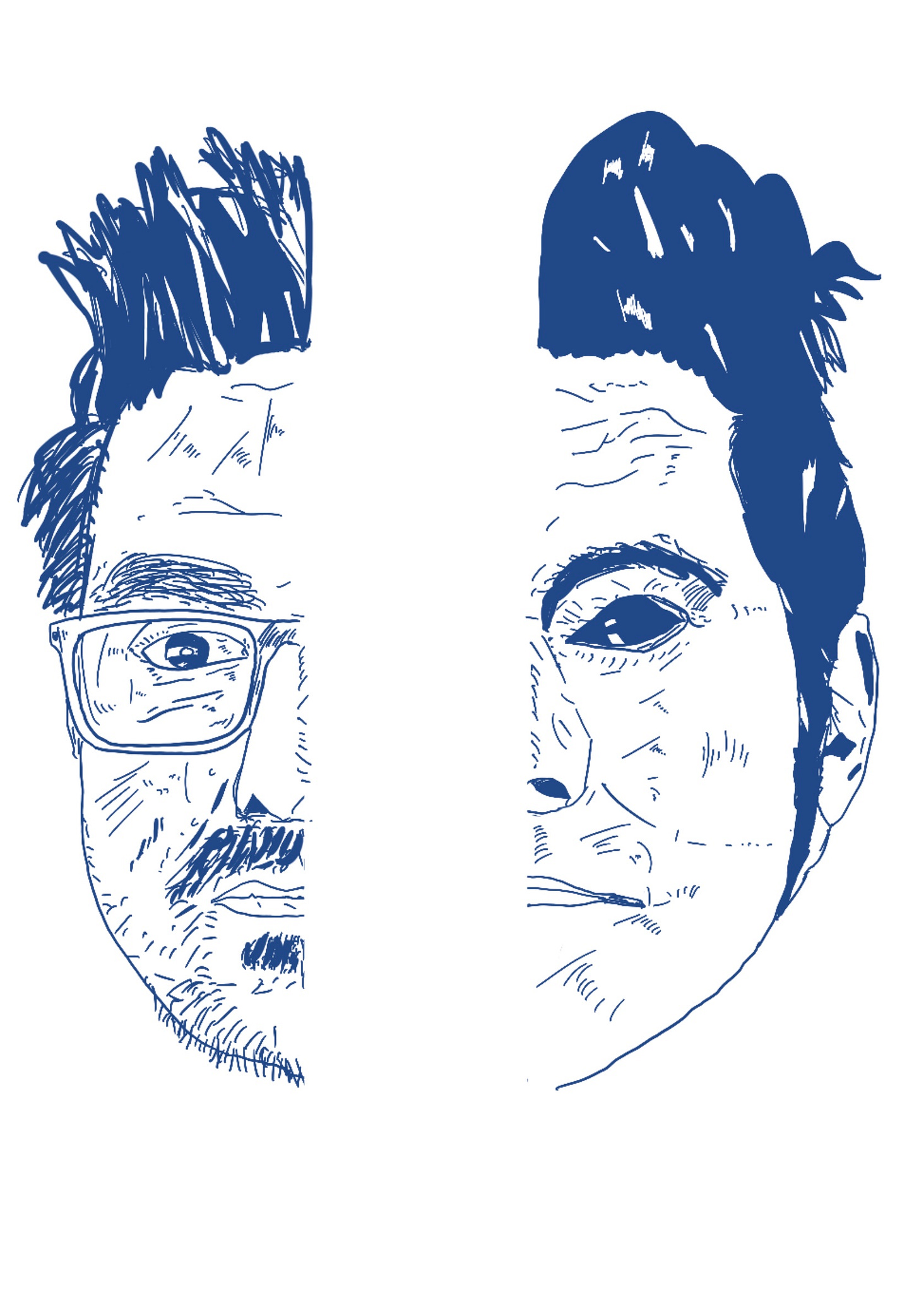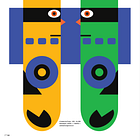CSP 014 - Building Your Second Brain: A Practical Guide to Personal Knowledge Management
How to capture, curate, crunch and contribute
Hey Creative Souls,
I hope you are safe and well.
The weather is spectacular here in the UK right now! Loving it.
I'm putting the final touches to my Workshop Mastery: Design, Teach & Engage Your Audience book - it is due out this weekend.
If you want to pre-register for notifications for when the book launches, then the LeanPub platform will let you do that - https://leanpub.com/workshopmastery/
Building Your Second Brain: A Practical Guide to Personal Knowledge Management
Learning is the engine of our personal creative and career growth. To fuel that engine, we need a system to capture, organise, and apply what we learn.
That's where a Personal Knowledge Management System (PKMS) comes in.
Think of it as your "second brain" – a personalised system (tools and processes) for gathering, processing, and using information. It's not just about collecting resources; it's about transforming information into knowledge through action.
Read further for details insights, or watch the video here. And I even did some creative artwork to accompany the post!
Please note, as I transition my YouTube branding over from Cultivated Management, videos like this one will still include in-video references to Cultivated Management.
Please also note that this video was made when Zotero was not my main tool of choice - but the process is the same!
What is a Personal Knowledge Management System (PKMS)?
Let’s start with a wikipedia definition:
“Personal knowledge management (PKM) is a collection of processes that a person uses to gather, classify, store, search, retrieve and share knowledge in their daily activities (Grundspenkis 2007) and the way in which these processes support work activities (Wright 2005). ” Wikipedia
In a nutshell it is a system that a person uses to aid their learning.
Learning doesn’t happen by gathering resources together – it happens by discovering new ideas, blending information together, implementing these new ideas (where possible) and observing and moving forward with what you have learned.
My Personal Knowledge Management System (PKMS)
My PKMS is built around four key activities, the 4 C's.
Capture, Curate, Crunch, Contribute.
1. Capture: Gathering the Raw Materials
This is where you collect information from various sources:
Handwritten Notes: I still prefer writing notes by hand for better retention. I then snap a photo of them and add them to my PKMS.
Web Articles: Use a web clipper to save interesting articles.
Kindle Highlights: Extract your highlighted passages.
Ideas and Inspiration: Jot down ideas as they come, whether in an app or a notebook.
Everything ultimately goes into a central "Inbox" for processing. I use Zotero for this, but loads of tools exist like Apple Notes, Evernote, Notion etc
2. Curate: Filtering and Organising
This step involves reviewing your captured information and deciding what to do with it:
Is it still relevant? Discard anything that no longer interests you.
Where does it belong? Organise notes into folders or tags.
What's the next step? Should you study it further, store it for future reference, or delete it?
I review my "Inbox" weekly, tagging and moving notes to appropriate folders. For long-term storage, I use a "Commonplace Book" folder - I have a post on that soon!
3. Crunch: Turning Information into Knowledge
This is the core of the learning process. It involves actively engaging with the information:
Read and re-read: Look for key insights and connections.
Connect to existing knowledge: How does this new information relate to what you already know?
Put it into action: Experiment with new ideas and approaches.
For example, if I learn a new presentation technique, I'll try it out and see what works. This experimentation is crucial for turning information into practical knowledge.
4. Contribute: Sharing Your Insights
Once you've gained knowledge through experimentation, share it with others:
In the workplace: Share new ideas with your team.
Online: Write blog posts, create videos, or share on social media.
Mentoring/Coaching: Help others learn and grow.
Contributing solidifies your own understanding and helps others benefit from your learning.
Tools I Use to aid the 4 c workflow:
Zotero: My primary tool for capturing and organising information.
Apple Note: For capturing notes, observations, cool art, great creativity, my own thoughts and ideas etc
Notepads and notebooks
Crunching is really the learning phase. This is the assimilation of information from the source into my own brain and behaviours through learning (study, putting into action etc).
After putting the information into action (crunching) I rarely come back to the source in Zotero to be honest. I have weaved the information into the fabric of who I am by putting the information into action. The source is kept in my PKMS for reference or citation.
I don’t want my personal knowledge management system simply to become a repository of information that I pretend I know.
I want to actually know it, to change because of it and to demonstrate this knowledge in my very behaviours – so I must put the information into action. This is what crunching is.
I’ve discovered something – capture
I’ve tested it to make sure I want to process it – curate
I’ve mashed it with what I already know and turned it into knowledge and behaviours – crunch
I have shared it back either through my work, or through articles and videos like this - contribution
Other factors to consider
Use tags or labels
I use tags and labels in my tool (Zotero) A LOT.
For example, I can search for “communication” as a tag and it will bring back every single note I have tagged with “communication”.
This allows me to see all of the varying topics, ideas, themes and connections across my entire personal knowledge management system that are tagged with “communication”.
Tags / Labels are super helpful.
Full of Dross
If you're not careful with your PKMS it could become full of dross and useless information / notes etc.
The curation stage is very important. It's easy to capture the entire web (and your notebook) and make it hard to find anything in your PKMS.
Curation is the key to avoiding your PKMS becoming bloated and full of stuff you don't need, or so overwhelming that you stop using it.
A routine of curation can help you avoid this. I tend to do my curation over the weekend.
It is incomplete by design
There is always more to study than can ever be documented and captured. The more I’ve learned, the more I’ve appreciated I know very little indeed. Sometimes this is soul destroying, but it’s the nature of personal development.
Iterate
The key to a successful Personal Knowledge Management System is to keep iterating until it feels right. I doubt you’ll ever get your system spot on, but you can get close. Close is good.
But as soon as it doesn’t feel right again, try something different. Just be careful not to procrastinate by fiddling with the system rather than achieving the system’s purpose; to learn.
Key Takeaways:
Process Flow: We capture information into the PKMS, we curate it (tags, delete, move), we then crunch it (we learn) and we contribute (share back what we know)
Personalisation is key: Your PKMS should be tailored to your specific needs and learning style.
Simplicity is crucial: Avoid using too many tools.
Regular curation is essential: Keep your system organised and avoid information overload.
Action is paramount: Don't just collect information; put it into practice.
Iteration is ongoing: Continuously refine your system.
Building a PKMS is an ongoing process. It's about creating a system that empowers you to learn, grow, and make a meaningful impact.
Thanks for reading this article. If you enjoyed this edition of CSP, feel free to share it with others.
Until next time, where I’ll be sharing more ideas about creativity, learning and communication.
Cheers
Rob..
Support Creative Soul Projects
Creative Soul Projects is a reader supported creative outlet.
Your support and membership has helped to create lots of great content, and useful resources for other creative souls, around creativity, communication and personal learning.
Here’s how you can support CSP:
The Zero to Keynote book: Available to buy in a beautiful printed version (UK only) & a delightful digital PDF version (Global).
The Take a Day Off book: Available to buy in a beautiful printed version (UK only) & a delightful digital PDF version (Global).
The Communication Superpower Workbook: Available to buy as a PDF download, designed to help you develop effective communication skills.
📒 Find more resources, free downloads and guides in the CSP Store.
🕋 Dig into the archive for great content.









